Great Work!
"Heer Diamonds is the best CVD diamond company in India in my opinion. The quality of diamonds offered by them is impeccable. Nicky Moreno "
Lab-created diamonds, developed using advanced technology in controlled environments, mirror the look and quality of natural diamonds at a fraction of the cost. Graded based on the 4Cs— Cut, Color, Clarity, and Carat—these diamonds offer ethical value without compromising on brilliance or beauty. Whether through HPHT or CVD processes, lab diamonds are eco-friendly, customizable, and a great investment for the future.
Manufacturers create lab-grown diamonds using two methods: High Pressure High Temperature (HPHT) and Chemical Vapor Deposition (CVD). Heer Diamonds is a leading producer of CVD diamonds in India.
CVD rough diamonds are evaluated using the 4Cs of diamond grading: Cut, Clarity, Color, and Carat. These characteristics determine the quality and value of the diamond in the industry.

The cut of a diamond plays a crucial role in determining its sparkle and overall brilliance. According to lab-grown diamond manufacturers, a well-executed cut can enhance a diamond’s light performance. Fancy cut lab-grown diamonds are graded to help customers assess their quality. The grading categories for diamond cuts includes:
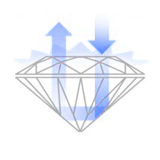
Diamonds with an excellent cut exhibit outstanding brilliance and fire, reflecting nearly all the light that enters. This results in a remarkable sparkle and vibrant life, making them the most sought-after choice for those who prioritize quality.

A very good cut diamond effectively reflects the majority of light, creating impressive fire and brilliance. When viewed under typical lighting conditions, these diamonds can rival excellent cuts, particularly in lab-grown varieties available at wholesale prices.

Diamonds classified with a good cut reflect a significant portion of incoming light, offering a commendable appearance that exceeds average standards. This category represents a fantastic value compared to higher-cut grades, making them an appealing option for budget-conscious buyers

Diamonds that fall into the fair or poor cut category tend to allow a considerable amount of light to escape, which diminishes their brilliance and fire. This grading is often more acceptable for diamonds weighing less than 0.75 carats, where subtle differences in sparkle are less perceptible. As a result, these diamonds may appear dull or lifeless, even to those without extensive knowledge.
Diamond cut is the most important criteria of grading. According to the Lab grown diamond manufacturers, the brilliance of a diamond depends on how good the cut is. Furthermore, lab grown Fancy Cut Diamonds are defined and categorized in different grades to help the customers in determining the cut of a particular diamond. The grades are:
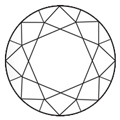
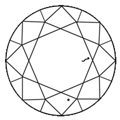

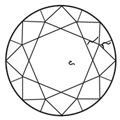

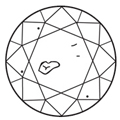
When most industry experts discuss the color of diamonds, they are generally referring to lack of transparency or color of the diamond. CVD Diamond manufacturers create diamonds that are made of 100% pure carbon without impurities therefore they are completely colorless. However, almost all diamonds contain some extent of color impurity caused by traces of nitrogen, boron, hydrogen or other elements. Most diamonds suffer only traces of nitrogen, which produces a pale yellow or brownish color.
To grade color of the diamonds, they should be free, because if the diamond is in the metal, the metal will affect the color we perceive. For example, a slightly yellow diamond might glitter more if categorized under yellow gold while it looks less yellow if categorized under white gold or platinum.
Diamonds are placed table-down, pavilion up, and magnified under 10X loup.
Lettering system from D to Z is used to determine the amount of color in each diamond with D awarded only to rarely complete colorless diamonds.
Grades of Diamond color: Colorless diamonds and diamonds that are yellow or yellowish brown are grouped into the following categories. These varieties do not apply to fancy colored diamonds – they have their own grades.
| Color Grades | D E F | G H I J | K L M | N to R | S to Z |
| Parameters | Colorless | Near Colorless | Faint | Very Light | Light |

It’s easier to understand this C of all “4Cs”. A unit of weight for lab grown diamonds and other gemstones is carat. Weight of a diamond is directly related to the size, and although incorrect, these terms are sometimes used interchangeably. It is a term that is derived from the use of an ancient ‘Carob’ seed in measuring small weights. Table of common weight-related terms are given below.
One Carat is 0.200 grams (There are 5 carats in 1 gram and 142 carats to 1 oz.)
A carat is divided into 100 parts each called a point. So,
Lab-grown diamonds are created without the need for mining, making them an nvironmentally friendly choice. This aspect resonates particularly with millennials who appreciate the guilt-free nature of these diamonds.
With exceptional quality and stunning visual allure, lab-created diamonds often surpass natural diamonds in ethical considerations and craftsmanship. Their beauty, combined with their ethical production, makes them a popular choice among consumers.
Offering a price advantage of 25 to 30 percent compared to natural diamonds, lab-created diamonds represent a smart investment option. This affordability allows buyers to get more value for their money without compromising on quality.
| Particulars | Lab Grown Diamond | Natural Diamond |
|---|---|---|
| Is it Conflict Free? | Yes | May Be |
| Is real? | 100% | 100% |
| Source | Laboratory | Mined from Earth |
| Eco-friendly? | 100% | Not at all |
| Quality | Since created in Lab , it comes without flaws | No quality standard is predicted |
| Customization Options | Yes | May or may not be available |
| Longevity | Lasts Forever | Lasts Forever |
| Is it artificial? | No | No |
| Brilliance Over Time | Retains its shine | Retains its shine |
| Is it a Diamond? | Yes | Yes |
| Affordability | Very cost-effective | Less cost-effective |
| Quality Consistency | High quality delivered consistently due to controlled conditions | Quality varies cannot be guaranteed |
"Heer Diamonds is the best CVD diamond company in India in my opinion. The quality of diamonds offered by them is impeccable. Nicky Moreno "
"Working with this was an absolute pleasure. They guided me through the process with expertise and patience, resulting in a diamond ring that exceeded my expectations"
